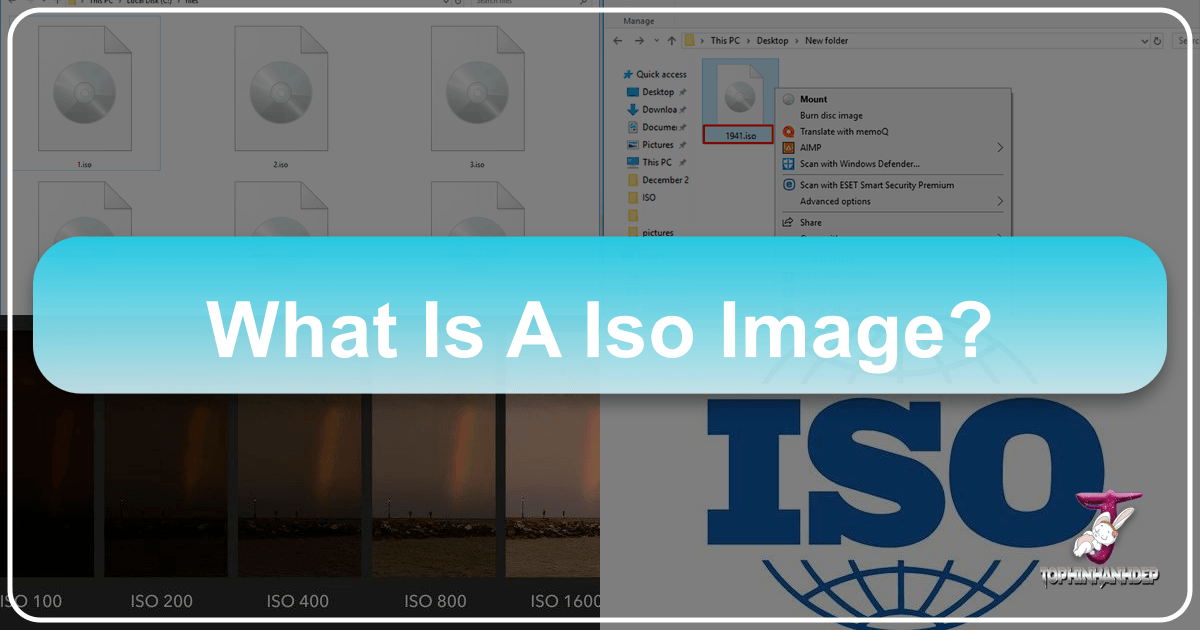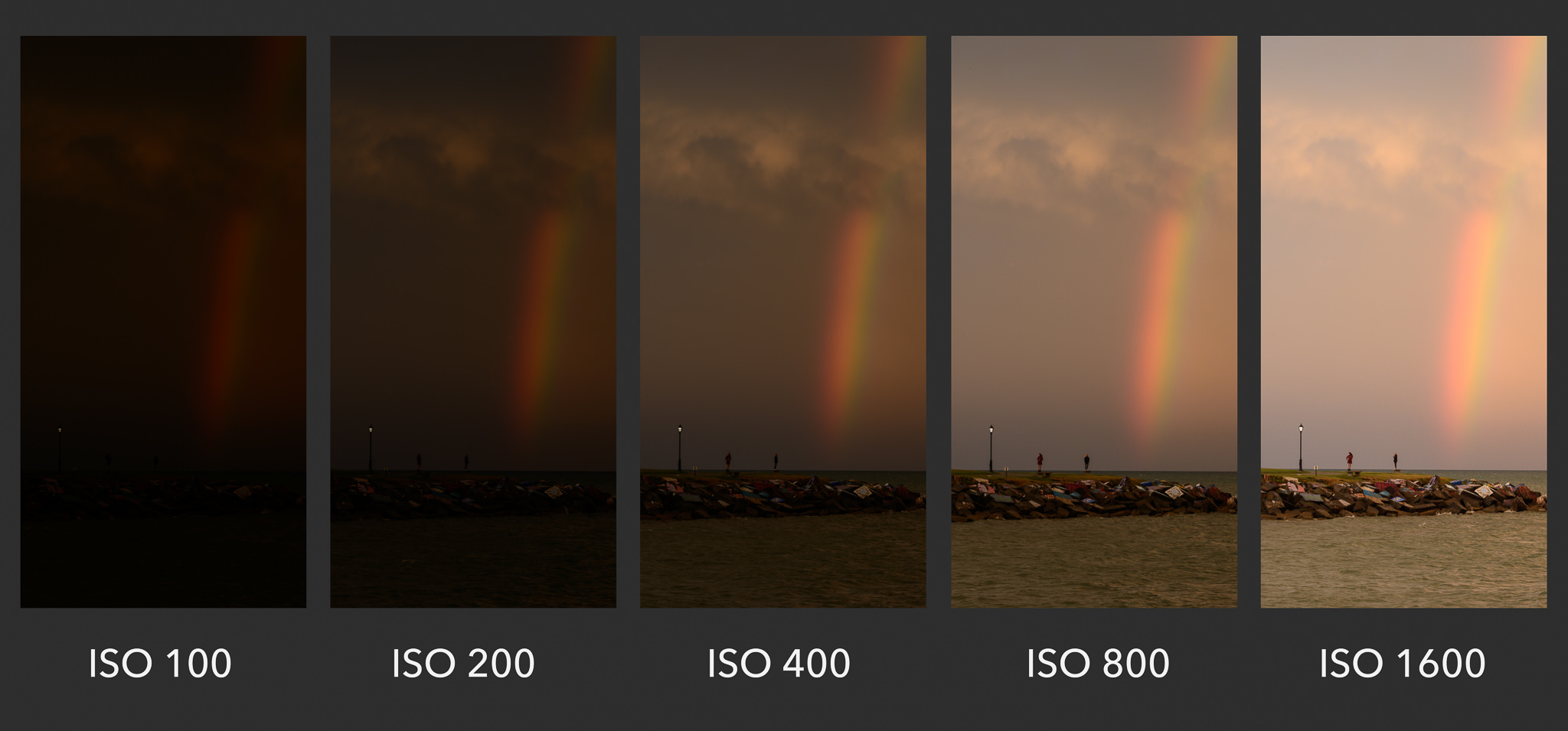Decoding ISO: Mastering Light Sensitivity for Stunning Images on Tophinhanhdep.com

In the vibrant world of digital photography and visual design, every element plays a crucial role in crafting an impactful image. From the composition and lighting to the subject matter and post-processing, each decision contributes to the final aesthetic. Among the foundational concepts that photographers must grasp is ISO – a seemingly simple setting that holds immense power over the look and feel of your photographs. At Tophinhanhdep.com, we believe that understanding ISO is not just a technical necessity but a creative tool, allowing you to capture breathtaking wallpapers, serene nature scenes, compelling abstract art, and deeply emotional or beautifully composed photographs. This comprehensive guide will demystify ISO, exploring its principles, its profound impact on image quality, and how mastering it can elevate your photography, whether you’re aiming for high-resolution stock photos or unique visual design elements.

The journey of creating exceptional visual content begins with a solid understanding of your camera’s capabilities and how to manipulate light. ISO, standing for International Organization for Standardization, is a standard that dictates the light sensitivity of your camera’s sensor. In the days of film, ISO (or ASA) referred to the film’s sensitivity to light; a higher number meant more sensitive film, requiring less light for a proper exposure. In the digital era, the principle remains the same, but instead of physical film, we’re talking about the digital sensor’s ability to amplify available light. A low ISO, such as ISO 100 or 200, indicates lower sensitivity, demanding more light for a correct exposure but generally producing cleaner, more detailed images. Conversely, a high ISO, like 1600 or 3200, signifies higher sensitivity, allowing you to capture images in dimmer conditions with less light, but often introducing a byproduct known as “noise.” This intricate dance between light, sensitivity, and image quality is at the heart of photographic mastery, and Tophinhanhdep.com is here to guide you through every step, offering resources, inspiration, and tools to perfect your craft.

The Core Concept of ISO in Digital Photography
To truly master your camera and create the kind of stunning images featured on Tophinhanhdep.com, it’s essential to grasp the core mechanics of ISO. It’s not just a number on your camera’s dial; it’s a fundamental pillar of exposure, intricately linked with other key settings.
What is ISO? Unraveling the Sensitivity Scale
At its heart, ISO in digital photography represents the sensitivity of your camera’s sensor to light. Think of it as how “hungry” your sensor is for light. A low ISO setting (e.g., ISO 100, 200) means your sensor is less sensitive, requiring more light to achieve a correct exposure. This is ideal for bright conditions, studio photography, or when you have ample natural light, resulting in images with the finest detail and least digital interference. These are the settings often favored for creating high-resolution, pristine stock photos or the detailed beautiful photography you find for desktop backgrounds on Tophinhanhdep.com.

As the ISO number increases (e.g., ISO 400, 800, 1600, 3200, 6400, and beyond), the sensor’s sensitivity to light intensifies. This allows you to capture images in low-light environments without resorting to a flash, which can often flatten a scene, or a slow shutter speed, which can introduce motion blur. For instance, capturing an aesthetic night cityscape, a moody indoor portrait, or a candid emotional moment in dimly lit conditions often necessitates a higher ISO. While higher ISOs offer invaluable flexibility, they come with a trade-off that every photographer must learn to manage: digital noise. This noise manifests as speckles or graininess, degrading image quality, especially in darker areas. Understanding this scale and its implications is the first step towards making informed creative decisions.
The Exposure Triangle: ISO’s Role Alongside Aperture and Shutter Speed
ISO doesn’t exist in a vacuum; it is one-third of what photographers affectionately call the “Exposure Triangle.” This triangle comprises ISO, Aperture, and Shutter Speed, and all three work in concert to control the amount of light that reaches your camera’s sensor, thus determining the brightness of your image.
- Aperture: This refers to the opening in your lens that controls the amount of light passing through. A wider aperture (smaller f-number, like f/2.8) lets in more light and creates a shallow depth of field, blurring the background. A narrower aperture (larger f-number, like f/16) lets in less light but keeps more of the scene in focus.
- Shutter Speed: This is the duration for which your camera’s shutter remains open, allowing light to hit the sensor. A fast shutter speed (e.g., 1/1000s) freezes motion, while a slow shutter speed (e.g., 1/30s or longer) can create motion blur, often used for artistic effects like silky water in nature photography.
ISO acts as the final adjuster in this triangle. If you’re in a low-light situation and you’ve already opened your aperture as wide as possible and slowed your shutter speed to the brink of motion blur, then increasing your ISO is often the only remaining option to achieve a proper exposure. This interconnectedness means that adjusting one setting often requires adjusting another to maintain the desired exposure and creative effect. For example, if you want a very shallow depth of field (wide aperture) but also want to freeze fast action (fast shutter speed) in bright light, you might need a very low ISO to avoid overexposing the image. Mastering the balance between these three elements is key to digital photography, enabling you to capture everything from vibrant abstract art to subtle emotional narratives with precision. Tophinhanhdep.com’s extensive collections of images are a testament to photographers who have skillfully navigated this triangle.
ISO’s Impact on Image Quality and Aesthetics
The choices you make regarding ISO extend far beyond mere exposure; they fundamentally shape the quality, detail, and overall aesthetic of your photographs. For visual designers, graphic designers, and photographers aiming for digital art perfection, understanding these impacts is paramount.
Navigating Noise: The High ISO Trade-off
The most significant consequence of increasing your ISO is the introduction of digital noise. Noise manifests as random speckles, graininess, or discolored pixels, particularly noticeable in the darker areas of an image. It can degrade fine details, reduce color accuracy, and give an image a “dirty” or “mushy” appearance. For high-resolution images, stock photos, or anything intended for large prints or detailed wallpapers on Tophinhanhdep.com, excessive noise can be a major detractor.
Different cameras handle noise differently. Professional-grade full-frame cameras generally produce cleaner images at higher ISOs than entry-level crop-sensor cameras, thanks to larger sensors and more advanced processing. However, even the best cameras have their limits. The key is to find the “sweet spot” – the highest ISO you can comfortably use without introducing unacceptable levels of noise for your specific purpose. This varies based on your camera, your lighting conditions, and your desired outcome. Sometimes, a little noise can add a gritty, artistic texture to an image, especially for certain aesthetic, sad/emotional, or abstract compositions. However, for most applications, especially those requiring pristine quality, minimizing noise is a priority.
Achieving Pristine High-Resolution Images with Optimal ISO
For photographers and designers focused on delivering high-resolution images, whether for commercial stock photography, stunning digital art, or detailed graphic design elements, optimal ISO selection is critical. Low ISO settings (100, 200, 400) are almost always preferred when light conditions allow. These settings maximize dynamic range, preserve the most detail, and minimize noise, resulting in the cleanest possible files.
Consider a scenario where you’re shooting a detailed nature photograph of a landscape or an intricate abstract pattern for Tophinhanhdep.com. In bright daylight, setting your ISO to its base value (often ISO 100) will yield the sharpest results, allowing for maximum flexibility in post-processing. This allows converters, compressors, and optimizers to work with the cleanest source material, leading to superior final output. When noise is present, it can complicate image manipulation, making tasks like sharpening, color grading, or even applying certain filters less effective. Therefore, for images where absolute clarity and detail are paramount, always default to the lowest possible ISO.
ISO and the Art of Visual Storytelling
Beyond the technical aspects, ISO also plays a subtle yet powerful role in the aesthetic and emotional impact of an image. The presence or absence of noise can contribute to the “feel” of a photograph, impacting its visual design.
- Clean, Crisp Images: Low ISO images often convey a sense of professionalism, clarity, and precision. They are ideal for beautiful photography, commercial work, and any scenario where pristine detail is crucial, such as product photography or architectural shots. These are the kinds of images that make for stunning, high-definition wallpapers and backgrounds on Tophinhanhdep.com.
- Gritty, Atmospheric Images: Conversely, intentionally allowing a certain level of noise by using a moderately high ISO can impart a raw, documentary, or artistic feel to a photograph. This can be particularly effective for sad/emotional photography, candid street scenes, or abstract compositions where a sense of rawness or moodiness is desired. The grain can sometimes mimic the texture of film, adding a nostalgic or timeless quality.
Understanding this allows photographers to make creative choices with ISO, treating it not just as a setting to achieve correct exposure, but as a tool to shape the visual narrative and mood of their work. This is part of the “creative ideas” and “photo manipulation” aspects that Tophinhanhdep.com champions, encouraging photographers to think beyond the obvious.
Practical Applications and Creative Control with ISO
Mastering ISO means more than just knowing what the numbers mean; it’s about making conscious decisions in diverse photographic scenarios to achieve your creative vision. The flexibility ISO offers can dramatically expand your photographic possibilities.
Low Light Photography: Pushing the ISO Boundaries
One of the most common challenges in photography is capturing clear images in low-light conditions. Whether you’re shooting indoors without a flash, capturing the magic of twilight, or documenting an event at night, insufficient light often dictates that you must increase your ISO. This is where the skill of balancing ISO with noise becomes critical.
In these situations, your first approach should always be to maximize available light through wider apertures (smaller f-numbers) and slower shutter speeds (if motion blur isn’t an issue, perhaps with a tripod). However, when these options are exhausted, increasing ISO becomes necessary. The goal is to use the lowest possible ISO that still allows for a sufficiently fast shutter speed to prevent motion blur and an aperture that provides the desired depth of field. For instance, photographing a concert or an indoor sporting event requires fast shutter speeds to freeze action, so a high ISO (e.g., ISO 3200, 6400, or even higher) might be indispensable, even if it means accepting some noise. Tophinhanhdep.com features many examples of stunning night photography and indoor shots that demonstrate how skilled photographers push these boundaries, turning challenging light into a creative opportunity. The “mood boards” and “thematic collections” on our site often showcase these dramatic low-light compositions.
Freezing Motion and Shallow Depth of Field: ISO’s Creative Versatility
ISO’s role isn’t limited to compensating for low light; it’s also a powerful tool for achieving specific creative effects, especially when combined with aperture and shutter speed.
- Freezing Motion: When photographing fast-moving subjects, such as wildlife, sports, or children at play, a fast shutter speed is essential. In situations where light isn’t abundant, you might need to increase your ISO to achieve that fast shutter speed, even if you could technically get a proper exposure with a lower ISO and slower shutter speed. This is a deliberate choice to prioritize freezing the action over absolutely minimal noise. The dynamic, high-resolution action shots found in our stock photo collections on Tophinhanhdep.com often employ this technique.
- Achieving Shallow Depth of Field: A wide aperture creates a shallow depth of field, beautifully blurring the background and making your subject stand out – a technique popular in portraiture, macro photography, and for achieving aesthetic bokeh. In bright conditions, a wide aperture might let in too much light, leading to overexposure even at the lowest ISO and fastest shutter speed. In such cases, photographers sometimes use Neutral Density (ND) filters to reduce the amount of light entering the lens, allowing them to use wider apertures and slower shutter speeds. However, if you want a wide aperture and a relatively fast shutter speed without an ND filter, increasing your ISO can be counterproductive in bright light, as you’d need to decrease it to balance the exposure. The creative choice is often to keep ISO low and manage aperture/shutter, or use ND filters. But understanding the interplay means you know when a slightly higher ISO (if light isn’t too bright) could give you a touch more flexibility with shutter speed to also freeze slight motion while maintaining that beautiful shallow depth.
Ultimately, ISO empowers photographers to make deliberate choices that shape the final image, impacting everything from the clarity of a high-resolution print to the emotional resonance of a sad/emotional composition. It’s about taking control of your camera and bending its technical capabilities to serve your artistic vision, a philosophy deeply ingrained in the resources and inspiration provided by Tophinhanhdep.com.
Enhancing Your Workflow: ISO, Editing, and Tophinhanhdep.com’s Tools
Understanding ISO is not just about capturing the initial image; it’s also about optimizing your entire workflow, from shot to final output. The choices you make in-camera regarding ISO have significant implications for post-processing and the effective use of image tools.
Post-Processing Noise Reduction and AI Upscaling
While the ideal scenario is always to capture images with the lowest possible ISO to minimize noise, real-world shooting conditions don’t always permit this. Fortunately, modern digital photography workflows include powerful post-processing tools to mitigate the effects of high ISO noise. Software like Adobe Lightroom, Photoshop, and other dedicated noise reduction applications offer sophisticated algorithms to reduce luminance noise (graininess) and chrominance noise (color speckling) without excessively blurring fine details. This is an essential step, especially for images intended for high-resolution displays or prints, or for stock photos where image quality is paramount.
Furthermore, advancements in AI technology have introduced AI upscalers that can not only enlarge images but also intelligently reduce noise and enhance detail, making even high-ISO shots more presentable. If you’ve had to shoot at a very high ISO, an AI upscaler can be a lifesaver, helping to recover lost detail and smooth out grain, transforming a noisy image into something more refined. Tophinhanhdep.com offers insights into these digital photography techniques and recommends image tools, including converters, compressors, optimizers, and AI upscalers, to help you make the most of your captures, regardless of the initial ISO setting. Leveraging these tools effectively can mean the difference between an unusable image and a stunning piece of digital art.
Tophinhanhdep.com: Your Hub for ISO-Informed Inspiration and Tools
At Tophinhanhdep.com, we are dedicated to being your ultimate resource for all things visual. Our platform is designed to inspire and equip photographers, graphic designers, and visual artists with everything they need to create and share breathtaking content. Understanding ISO is a fundamental part of this journey, influencing nearly every aspect of image creation that we cover.
Our vast collections of images – including wallpapers, backgrounds, aesthetic shots, nature photography, abstract art, sad/emotional pieces, and beautiful photography – serve as a rich source of inspiration. As you browse these collections, you’ll begin to notice the subtle differences that ISO choices can make, from the pristine clarity of a low-ISO landscape to the moody, slightly textured feel of a high-ISO candid shot. These curated collections can spark new “photo ideas” and help you build compelling “mood boards” for your next project, guiding you toward specific “trending styles” and “thematic collections.”
Beyond inspiration, Tophinhanhdep.com offers a suite of “Image Tools” that complement your understanding of ISO. Whether you need to use image “converters” to switch formats, “compressors” and “optimizers” to prepare images for web use while preserving quality, or advanced “AI upscalers” to enhance detail and reduce noise in high-ISO shots, our tools are designed to streamline your workflow. We also delve into “Visual Design” concepts, including graphic design, digital art, and photo manipulation, explaining how a strong foundational understanding of photography basics like ISO can empower your creative ideas and execution. For those needing to quickly extract information, our “Image-to-Text” tools provide another layer of utility.
In conclusion, ISO is far more than a mere technical specification; it is a creative lever that, when understood and wielded skillfully, unlocks a world of photographic possibilities. It dictates how your camera sees light, influences the texture and clarity of your images, and ultimately shapes the aesthetic and emotional impact of your work. By mastering the exposure triangle, understanding the trade-offs of noise, and leveraging the powerful resources and tools available on Tophinhanhdep.com, you can transcend the technicalities and consistently capture stunning, high-resolution images that truly reflect your artistic vision. Explore, learn, and create – Tophinhanhdep.com is here to support your journey in digital photography and visual design every step of the way.